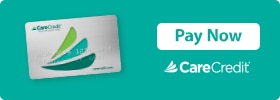A Guide to Platelet Rich Plasma Therapy
Non-invasive, outpatient injection therapy is growing in popularity as a solid, non-surgical alternative for adults with non-healing tendon injuries.
What is Platelet Rich Plasma (PRP) Therapy?
While most current treatments for chronic tendon injuries do not provide long term relief, Platelet Rich Plasma Therapy, or PRP, is a treatment option for non-healing tendon injuries, such as tennis elbow, Achilles tendonitis and knee tendonitis. PRP Technology was initially developed 20 years ago for hearth surgery to aide with wound healing and blood loss. PRP’s benefits are now being applied to the facilitation of healing tendon injuries.
Patients should consider PRP treatment if they have been diagnosed with a tendon injury in which conservative treatment such as antiinflammatories, physical therapy and bracing have not provided symptomatic relief.
To find out if PRP is a viable treatment option for you, an evaluation will be scheduled and MRI may by performed prior to injection to insure that there is not a major tear in the tendon that would best be treated by surgery.
The PRP injection usually takes about an hour, and is performed here at the Bone & Joint Institute as an outpatient procedure. You will be instructed not to take any anti-inflammatories for one week prior to the injection, as this will limit treatment benefits.
Patients can expect to see significant improvement in symptoms, such as elimination of the need for more traditional treatments like medications, cortisone injections or surgery; and a dramatic return of function.
PRP is designed to promote the long term healing of the tendon, and is not a “quick fix”. The process of PRP requires time and rehabilitation to allow the injured tendon to heal properly. Most patients saw 81% improvement in 3 months. Through regular follow up visits your doctor can determine when you are able to resume regular physical activities.
How does PRP Therapy work?
Using the patient’s own blood, speciallyprepared platelets are taken and then reinjected into the tendon of the affected area. These platelets release substances knows as “growth factors” that lead to tissue healing. For example, when you cut yourself, the body’s natural response is to attract platelets that release growth factors and facilitate the healing. By concentrating the platelets we increase the growth factors up to eight times which promotes the healing of tendons.
While other tendon injury treatments such as corticosteroid injections may provide temporary relief and stop inflammation, PRP injections actually heal the tendon over a period of time. The human body has a remarkable ability to heal itself and by re-injecting concentrated platelets we can facilitate the natural healing process.
Only your surgeon can help you decide if PRP therapy is the best treatment for your tendon injury. Talk to J. Lex Kenerly, Orthopaedic Surgeon, J. Matthew Valosen, Orthopaedic Surgeon, and the staff at the Bone & Joint institute of South Georgia if you have questions about whether non-surgical injection therapy is the best treatment for your condition.

